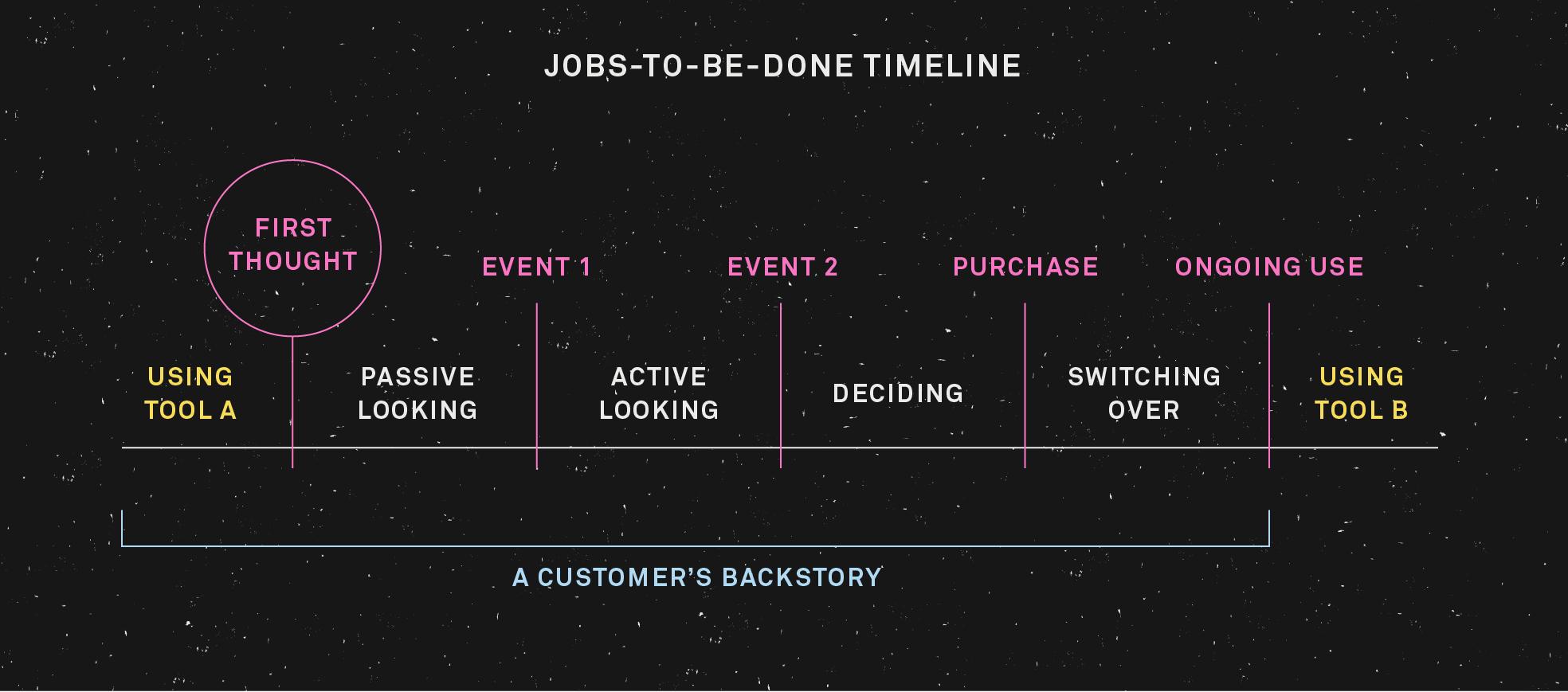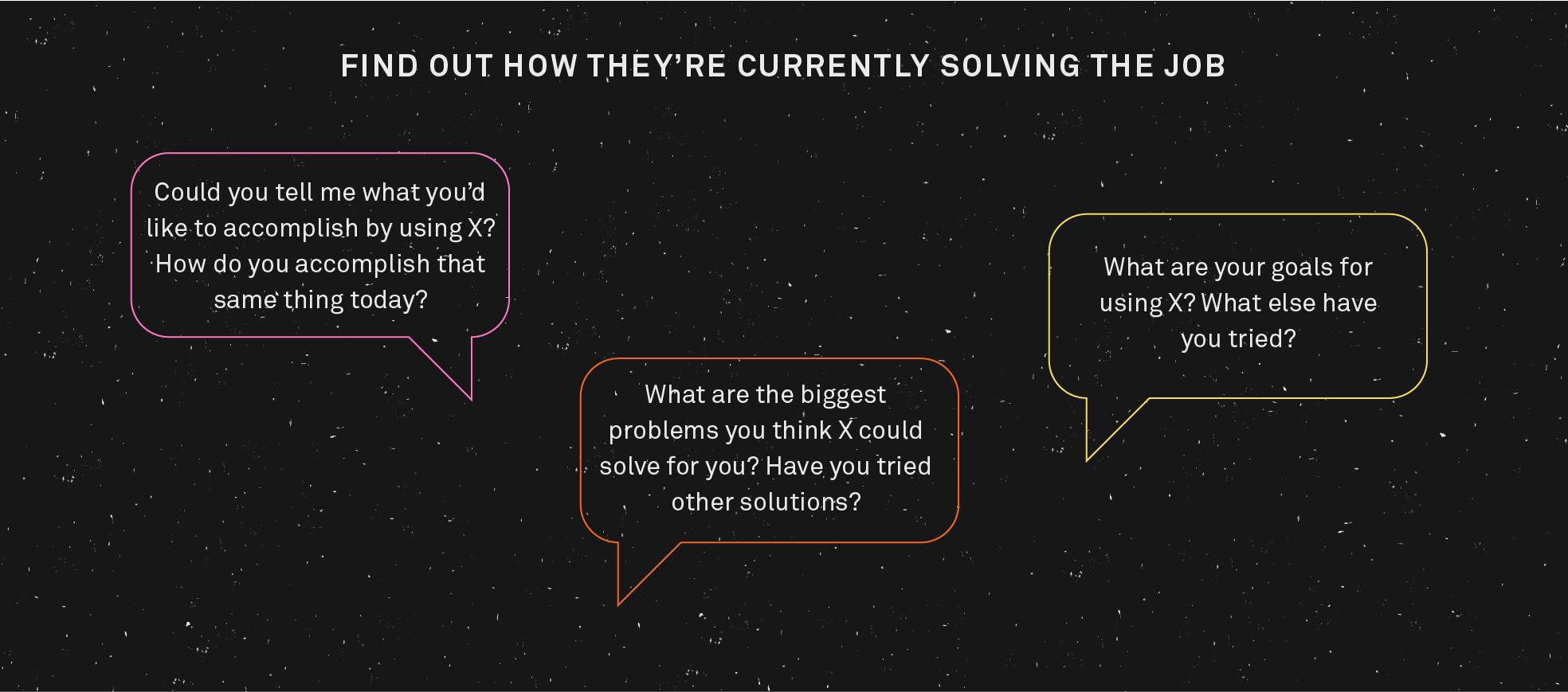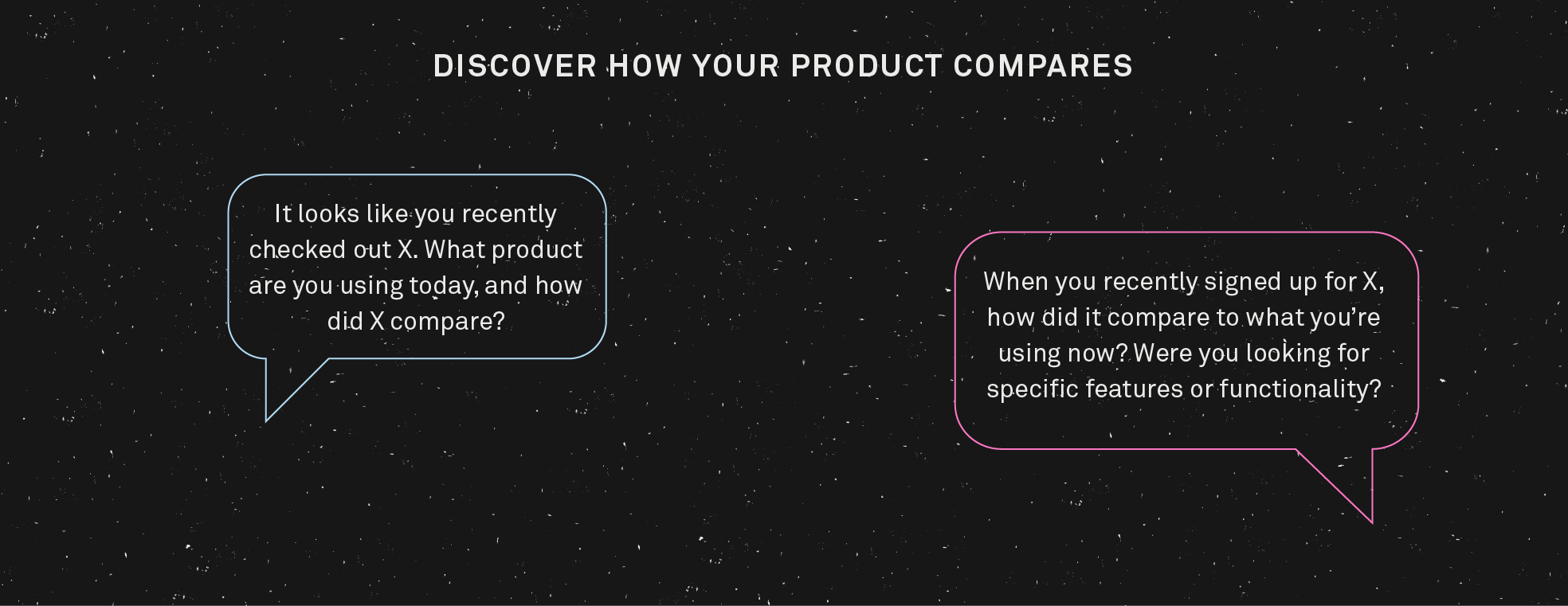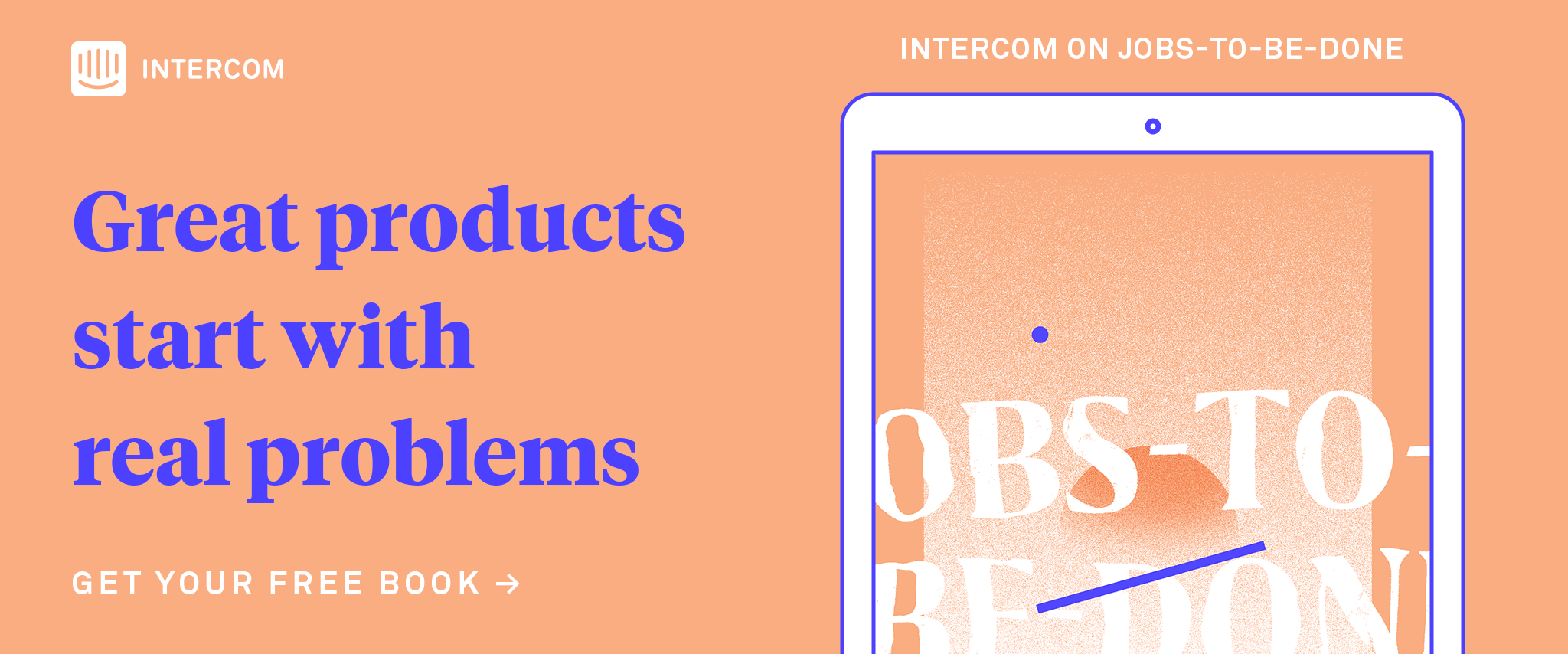
Are your future customers using another product?
Main illustration: Laura Bohill
When new customers sign up to your product, they don’t come out of nowhere, although it can seem that way with two screens and the vastness of the internet between you.
Each person has a backstory: an established way of doing the job they’re thinking about hiring your product to do. The challenge for anyone building product is understanding the value your customer will get from switching from the old way of doing things to the new way – your product.
Without a clear understanding of the value your product can bring, prospective customers will continue with the status quo or choose a competing product where the value is clear. Ignore your customers’ backstories and you risk losing them to your competitors.
Understanding the backstory
To understand your prospective customers and their backstories, you should answer these three questions:
- Are prospective customers using an existing product to do the same job today?
- If so, how easily are they able to evaluate my product against their current one?
- If they decide to switch to my product, what barriers will they encounter?
New customers don’t exist in a vacuum. If you’re selling a product only to very small startups, it’s possible they’ll be coming to you with a clean slate and no existing solution.
But as more established customers show up at your door, it’s almost certain you’ll need to convince them to replace a product they’re already using.
Once you know that a prospective customer has an existing product to do the same job, you can reframe your initial interactions with them. You need to meet them where they’re at on the Jobs-To-Be-Done timeline, making the best impression while they’re actively looking for potential solutions, deciding which one to use, and switching over.

People are busy and have a limited amount of time and attention, so they won’t go out of their way to try to understand why your solution is better. If you ask for too much effort from a prospective customer too soon on the timeline, you’ll lose them to a competitor or a distraction.
Improving your product
To illustrate how you can use the backstories of prospective customers to improve your product, let’s look at a real example we worked on for Articles, our knowledge base product.
1. Are prospective customers using an existing product to do the same job today?
Intercom’s customers have often asked us for knowledge base functionality, but it took time to design an Intercom approach to solving this problem. In the meantime, while some of our customers did without a knowledge base, we knew that many of them purchased standalone knowledge base software or built their own. Once we shipped our own solution, we knew we’d need to convince these customers to make the switch.
Because we understood the backstory, we knew the existing products prospective customers were using. That meant we could design a new customer experience aimed at people with existing knowledge bases, which in turn helped us attract a larger group of prospective customers.
2. If so, how easily are they able to evaluate my product against their current solution?
From Articles’ early beta customers, we learned that seeing how content is created and presented to end-users is an important part of evaluating a knowledge base product. Because of this, we made it possible to create and preview articles immediately, without the friction of first having to start a trial with a credit card. For customers with an existing knowledge base, we also built an importer to easily see how their content would look in our product right away.
Because we understood the backstory, we knew how people evaluated products against one another. By making it easy to see what content looks like in our product before making a buying decision, we gave prospective customers that first taste of success, which has helped us convince more customers to switch.
3. If they decide to switch to my product, what barriers will they encounter?
During the beta, we saw that creating lots of content can be a big barrier to using Articles, especially when a customer feels they must have an entire knowledge base ready before showing it to the world. We addressed this by adding features to make even a single piece of content useful: create one short article to answer a common question, share it in a few conversations with end-users and start getting value and feedback right away.
Because we understood the backstory, we knew the hurdles new customers would have to overcome. This helped us design ways for customers to start using the product incrementally, which has helped customers get value from our product sooner.
Answering these questions can be easy
Your customers aren’t one homogenous blob, so no two backstories will be the same. While there’s no one-size-fits-all approach, it’s easy to start by having some conversations with prospective customers and building a foundation of knowledge.
Here are a few ideas for how you can get started answering these questions. You can send these messages through Intercom, but no matter what tool you’re using, the principles are the same.
- To find out if potential customers are using an existing product to do the same job today, send a simple message targeting repeat visitors to your marketing website.

- To understand how easily they can evaluate your product against their current solution, send a message targeting people who’ve recently created a new account and explored the product but didn’t come back.

- To find out what barriers new customers encounter once they decide to switch to your product, send a message targeting people who’ve recently converted to a paid subscription. (If you have a data importer or another feature used by customers who are switching from another product, setting up an event to track usage of that feature could help you target your message even more effectively.)

Do you understand the backstory of your potential customers? Answering these questions and incorporating what you learn into your product’s new customer experience will make your future customers won’t end up in your competitors’ hands.






